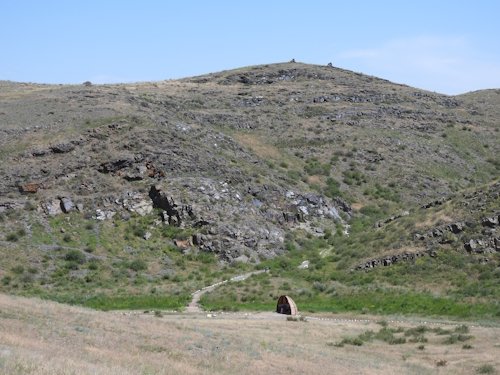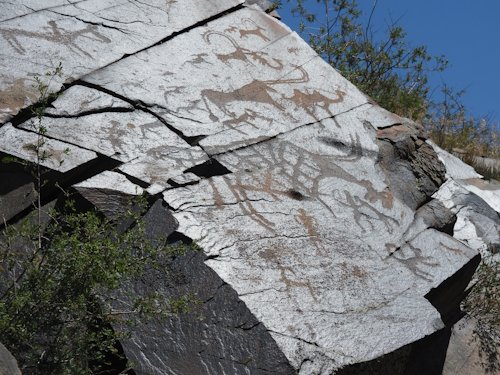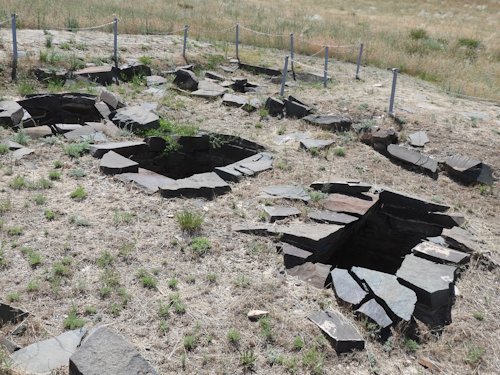Els Slots
WHS #909: Tanbaly
On a map, the Kazakh WHS of Tanbaly (not to be confused with Tamgaly Tas !) doesn’t look to be too far from Almaty, but it takes quite some time to cover the 170km between the two places (we did it in 2h45). I went with a car & driver which I’d hired for the day via Indyguide , and we first had to navigate the busy and chaotic traffic to get out of Almaty. Then there’s a good stretch of highway west and, after the turnoff to the north which is signposted to the Site of Tanbaly, what remains is a B-road with some potholes but little traffic. The only thing you see by the side of the road are large farms, and they keep sheep and horses as livestock. As so often with rock art sites, Tanbaly lies in a remote river canyon that once had special meaning for people living in or passing through the region but lost its significance later on. It’s also the only piece of exposed rock in an area of steppes and offers protection against the sun and wind.

Our first stop was at the museum, which was given a proper building in 2021 and even comes with a museum shop. They show a few findings from the site, such as pottery found in the graves. Otherwise, it is mostly large photographs of the rock art on display. They also explain how they cleared the rocks of graffiti, which has been a real problem at this site in the 1990s when there was no oversight. WH collectors can also find the original WH certificate on a wall inside the museum.
About a kilometre further along the road you enter the fenced reserve where the rock art and associated archaeological sites are. There’s a large parking lot and at the reception area, you must pay the entrance fee of 500 tenge (1 EUR). We were surprised that we were not the only visitors – a large bus was already parked there. It belonged to a group of art students, who were painting ‘en plein air’ at the site for a competition. We found them sitting everywhere with their canvases.

A visit to the site itself is done on foot via well-marked trails. Not all rock panels were open (they have 7) – we did 3, 4, and 5, and watched panel 2 from a viewpoint. Contrary to what I read online beforehand, you do not need a guide and no guides are available at the reception area. I was with a driver/guide who had been there before, but she wasn’t a specialist in the subject. She did know where to look though for the more special engravings such as the pregnant cow, the fighting dog, dancing people and some sun-deities.
I had brought my superzoom camera, which came in handy as the rock art often could be viewed better from a distance than when you were standing right in front of it. The specific kind of rock found here seems very suitable to keep the rock art preserved and the way it was done (chiselling or picketing the objects out of the rock with the use of tools, not carving) seems to be beneficial for the viewing conditions as well. You can see them well and they are not as weather/sunlight dependent as other rock art sites around the world. I especially liked their silvery backgrounds.

The main trail, which takes about 1.5 hours to complete, ends at some Bronze Age burial sites. These are stone ‘boxes’ in the ground (see 3rd photo). Both adults and children were laid to rest here in crouched positions, and some graves are considered to be cenotaphs (so having had no body at all). A few of the boxes hold interior engravings similar to the rock art.
Overall, I enjoyed my visit - it gets you deep into the Kazakh countryside, the rock art is well-visible and some of it is very old. The site seems well-managed nowadays and there was a pleasant atmosphere with the visiting group of students. We brought our own picnic lunch (there are no restaurants or other amenities in the area) and ate it sitting on one of the benches in the parking lot.
More on
Els SlotsComments
No comments yet.
